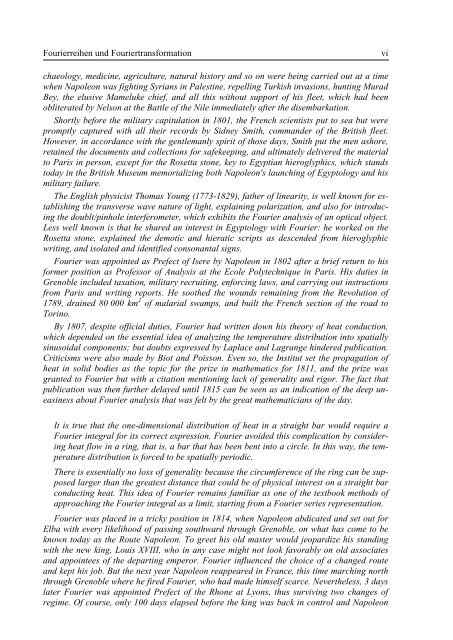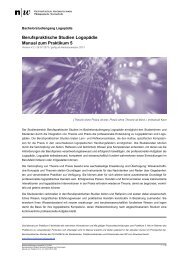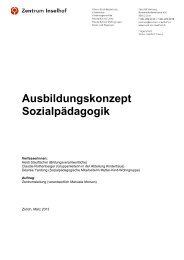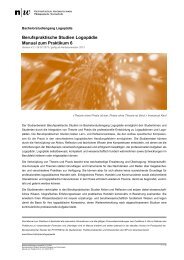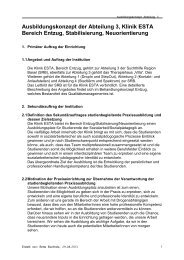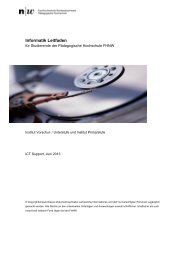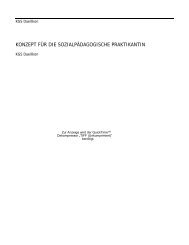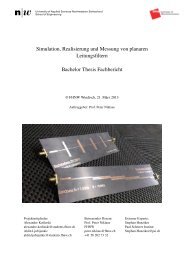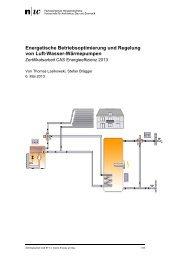Fourierreihen und Fouriertransformation - Fachhochschule ...
Fourierreihen und Fouriertransformation - Fachhochschule ...
Fourierreihen und Fouriertransformation - Fachhochschule ...
Sie wollen auch ein ePaper? Erhöhen Sie die Reichweite Ihrer Titel.
YUMPU macht aus Druck-PDFs automatisch weboptimierte ePaper, die Google liebt.
<strong>Fourierreihen</strong> <strong>und</strong> <strong>Fouriertransformation</strong><br />
vi<br />
chaeology, medicine, agriculture, natural history and so on were being carried out at a time<br />
when Napoleon was fighting Syrians in Palestine, repelling Turkish invasions, hunting Murad<br />
Bey, the elusive Mameluke chief, and all this without support of his fleet, which had been<br />
obliterated by Nelson at the Battle of the Nile immediately after the disembarkation.<br />
Shortly before the military capitulation in 1801, the French scientists put to sea but were<br />
promptly captured with all their records by Sidney Smith, commander of the British fleet.<br />
However, in accordance with the gentlemanly spirit of those days, Smith put the men ashore,<br />
retained the documents and collections for safekeeping, and ultimately delivered the material<br />
to Paris in person, except for the Rosetta stone, key to Egyptian hieroglyphics, which stands<br />
today in the British Museum memorializing both Napoleon's launching of Egyptology and his<br />
military failure.<br />
The English physicist Thomas Young (1773-1829), father of linearity, is well known for establishing<br />
the transverse wave nature of light, explaining polarization, and also for introducing<br />
the doublt/pinhole interferometer, which exhibits the Fourier analysis of an optical object.<br />
Less well known is that he shared an interest in Egyptology with Fourier: he worked on the<br />
Rosetta stone, explained the demotic and hieratic scripts as descended from hieroglyphic<br />
writing, and isolated and identified consonantal signs.<br />
Fourier was appointed as Prefect of Isere by Napoleon in 1802 after a brief return to his<br />
former position as Professor of Analysis at the Ecole Polytechnique in Paris. His duties in<br />
Grenoble included taxation, military recruiting, enforcing laws, and carrying out instructions<br />
from Paris and writing reports. He soothed the wo<strong>und</strong>s remaining from the Revolution of<br />
1789, drained 80 000 km 2 of malarial swamps, and built the French section of the road to<br />
Torino.<br />
By 1807, despite official duties, Fourier had written down his theory of heat conduction,<br />
which depended on the essential idea of analyzing the temperature distribution into spatially<br />
sinusoidal components; but doubts expressed by Laplace and Lagrange hindered publication.<br />
Criticisms were also made by Biot and Poisson. Even so, the Institut set the propagation of<br />
heat in solid bodies as the topic for the prize in mathematics for 1811, and the prize was<br />
granted to Fourier but with a citation mentioning lack of generality and rigor. The fact that<br />
publication was then further delayed until 1815 can be seen as an indication of the deep uneasiness<br />
about Fourier analysis that was felt by the great mathematicians of the day.<br />
It is true that the one-dimensional distribution of heat in a straight bar would require a<br />
Fourier integral for its correct expression. Fourier avoided this complication by considering<br />
heat flow in a ring, that is, a bar that has been bent into a circle. In this way, the temperature<br />
distribution is forced to be spatially periodic.<br />
There is essentially no loss of generality because the circumference of the ring can be supposed<br />
larger than the greatest distance that could be of physical interest on a straight bar<br />
conducting heat. This idea of Fourier remains familiar as one of the textbook methods of<br />
approaching the Fourier integral as a limit, starting from a Fourier series representation.<br />
Fourier was placed in a tricky position in 1814, when Napoleon abdicated and set out for<br />
Elba with every likelihood of passing southward through Grenoble, on what has come to be<br />
known today as the Route Napoleon. To greet his old master would jeopardize his standing<br />
with the new king, Louis XVIII, who in any case might not look favorably on old associates<br />
and appointees of the departing emperor. Fourier influenced the choice of a changed route<br />
and kept his job. But the next year Napoleon reappeared in France, this time marching north<br />
through Grenoble where he fired Fourier, who had made himself scarce. Nevertheless, 3 days<br />
later Fourier was appointed Prefect of the Rhone at Lyons, thus surviving two changes of<br />
regime. Of course, only 100 days elapsed before the king was back in control and Napoleon


